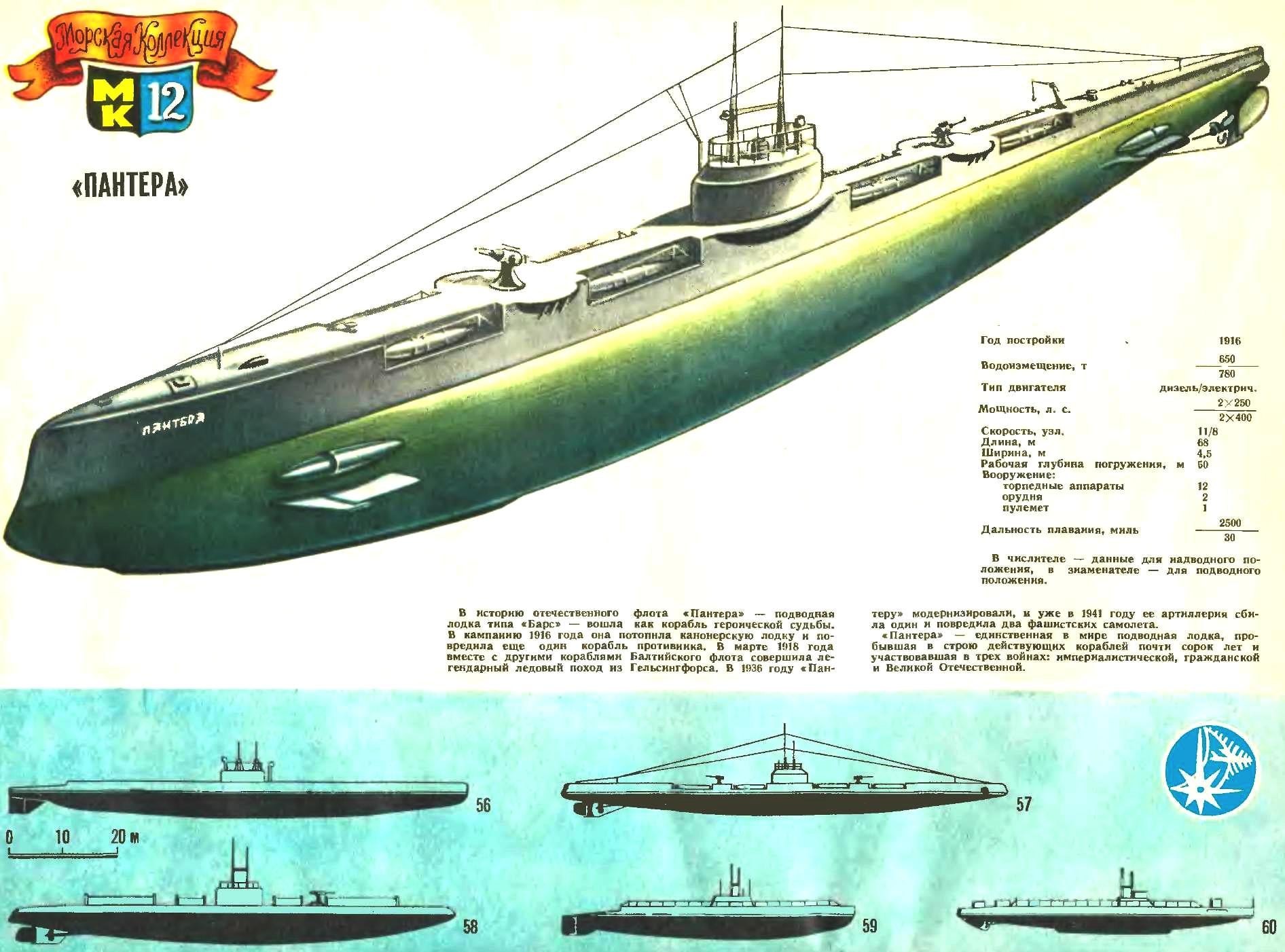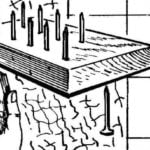 The tragic outcome of the Russian-японскоq war aroused in naval circles many contradictory opinions about how to be newly created Russian fleet. Considerable attention in these debates and discussions was placed on submarines.
The tragic outcome of the Russian-японскоq war aroused in naval circles many contradictory opinions about how to be newly created Russian fleet. Considerable attention in these debates and discussions was placed on submarines.
In 1911, developing the so-called “small” shipbuilding program, the Navy conducted a survey with submarine officers. Most of them considered the most successful boat “Shark” (34). Therefore, when the naval headquarters has informed the Baltic and Nevsky factories of his intention to place an order for 25 boats with surface displacement 600-650 t, I. Bubnov introduced the projects of the two boats — “Walrus” and “bars”, which is a further development of the “Sharks”. Nevsky shipyard has offered the project of the submarine “Narwhal” in 621 tons, designed by the firm of “electric bouts”.
In the same year these plants opened in Nikolaev branches, which started to build six submarines for the black sea fleet. Three of them — “Walrus”, “Seal” and “seal” — was designed by I. Bubnov, and three — “Narwhal” (56), “whale” and “Whale” — according to the American project.
Boat building in the Baltic is complicated by the intrigues of a number of industrial-Bank dealers, hurriedly founded the company “Noblessner” especially for the construction of submarines in revel. In 1912 the society received an order for 12 boats of the “leopard” — “Tiger”, “Lion”, “Lynx”, “Jaguar”, “Cougar”, “Leopard”, “Ruff”, “Trout”, “Eels”, “IDE”, “Tour” and “Panther” (57). Baltic shipyard had to build 6 more of these boats “leopard”, “Cheetah”, “boar”, “Wolf”, “Snake” and “Unicorn”. Of these 18 boats 6 was intended for the Far East, “Ruff”, “Eel”, “Trout”, “IDE”, “Unicorn” and “Snake”. However, the war upset all these plans…
The biggest trouble was the fact that diesel engines on all new boats with a capacity of 1320 HP was ordered in Germany, and, of course, no one was not received. To somehow get out of the situation with Amur gunboats had to remove 250-horsepower engines and adapt them for the construction of submarines. The result of the surface speed total of 11 knots instead of the projected 18 But even these engines was not enough for all boats, and the Navy was forced to buy diesels in the US (“Unicorn”, “Acne”), in England (“IDE”), as well as to re-order the domestic plant (“the Snake” and “Cougar”),
Unfortunately, it is not confined to these difficulties. The boats of the “Bor” no watertight bulkheads, which led to several tragic accidents in the most minor hull damage. Failure was the low position of the deck torpedo tubes, too great was the dive time. But the need in underwater ships in the Baltic and the Black sea remained high, so the far East boats was not sent. “Ruff” (58), and “Eel” were converted into mine layers. The black sea plants ordered six boats of the type “bars” — “Loon”, “Duck”, “Swan”, “Pelican”, “puffin” and “Orlan”. Bought in USA 11 boats of the “AG” (“American Golland”), which were built there, were delivered to Russia in the disassembled kind and gathered on the Baltic and black sea shipyard (59). Before the civil war managed to build only seven of the eleven boats “AG”, five in the Baltic and two in the Black sea.

56. “Narval” (Russia, 1912);
57. “Panther” (Russia, 1917);
58. “Ruff” (Russia, 1917);
59. “AG” (Russia, 1916);
60. “Medusa” (Italy, 1912).
Combat experience of the Russian fleet showed that, surpassing foreign power weapons, boats Bubnovsky-type had the unfortunate position of lattice devices and glavnoe, low survivability due to the lack of watertight bulkheads. To build these submarines ceased in 1917. Besides Russia, France, England, Germany and the United States, independently developed his own type of underwater vehicle Italy. In 1В91 year designer G. Pullino laid purely electric submarine “Delfino” displacement 95/105 t, then the Italian Navy has taken a wait Next submarine of the Italian Navy, designed by H Laurent, “Glauco” was launched only in 1905. It was followed by four of the same type: “chopped off” “Located” “Otaria” and “TRACECA”. These diving double-hulled boats have become the prototype for later submarines of the Italian buildings. Powered by three petrol engines and three propellers, boat Laurent when displacement 160/207 t developed a surface speed of 13 knots. Under water, going on two motors, they were giving 7 knots.
A larger ship is “Fock” was severely injured in the explosion of petrol vapours, and the next 8 boats of the “Medusa” (60) already had diesel-battery.
At the same time, from 1910 to 1914, the Italian Navy built two boats, the “Nautilus” and “Nereid”, a project de Bernardis and two boats, the “Galileo-Ferraris” and “Giacinto-Pollino” project, Cavallini. In their tactical and technical specifications of the boats of coastal defense was close to the Medusa. Entered the war almost a year later the other belligerent powers, Italy had the time to start creating a large diving boat with a Prototype for them was the boat “Balilla hidding” 710/870 tons, built according to the project Laurent for Germany and Italy requisitioned after the outbreak of hostilities. So, in 1916-1918 years were built two submarines of type “Pacinotti”—slightly modified “Balili”. With the power 2400/1200 PS they were armed with five torpedo tubes and two 57-mm guns and developed a surface speed of 16 and submarine 10 knots. They were followed by four boats of the type “Barbarigo” project Laurent — Cavallini. When the displacement 745/1150 t they had six torpedo tubes, a twin 57-mm guns and has a top speed of 17 knots — surface, and 10.5 — underwater. Along with them were the six boats of the “Pietro micca” project, Cavallini displacement 840/1340 T.
In addition to large boats, Italy during the war created two mine layer displacement of 400/460 tons and continued to build boats of coastal defense: 1V boat type E — superior “Medusa” and six smaller “Nautilus”.
The rest of the country until the end of the first world war almost has not developed their types of boat and either ready to buy or take the basis of English, French, American or Italian prototypes.
G. SMIRNOV



